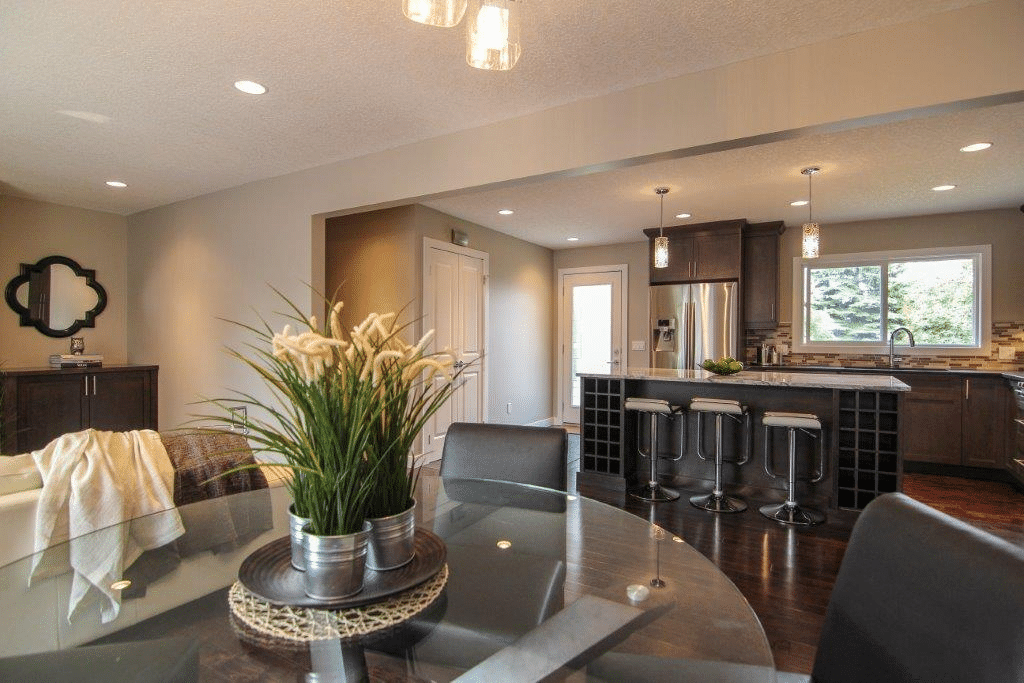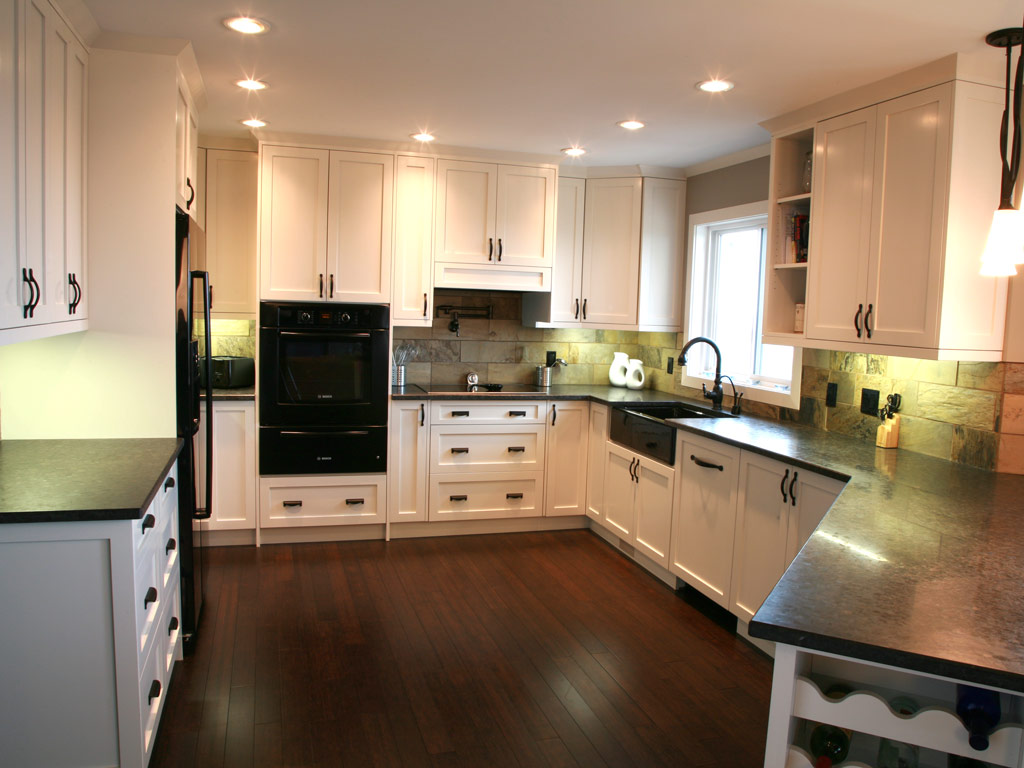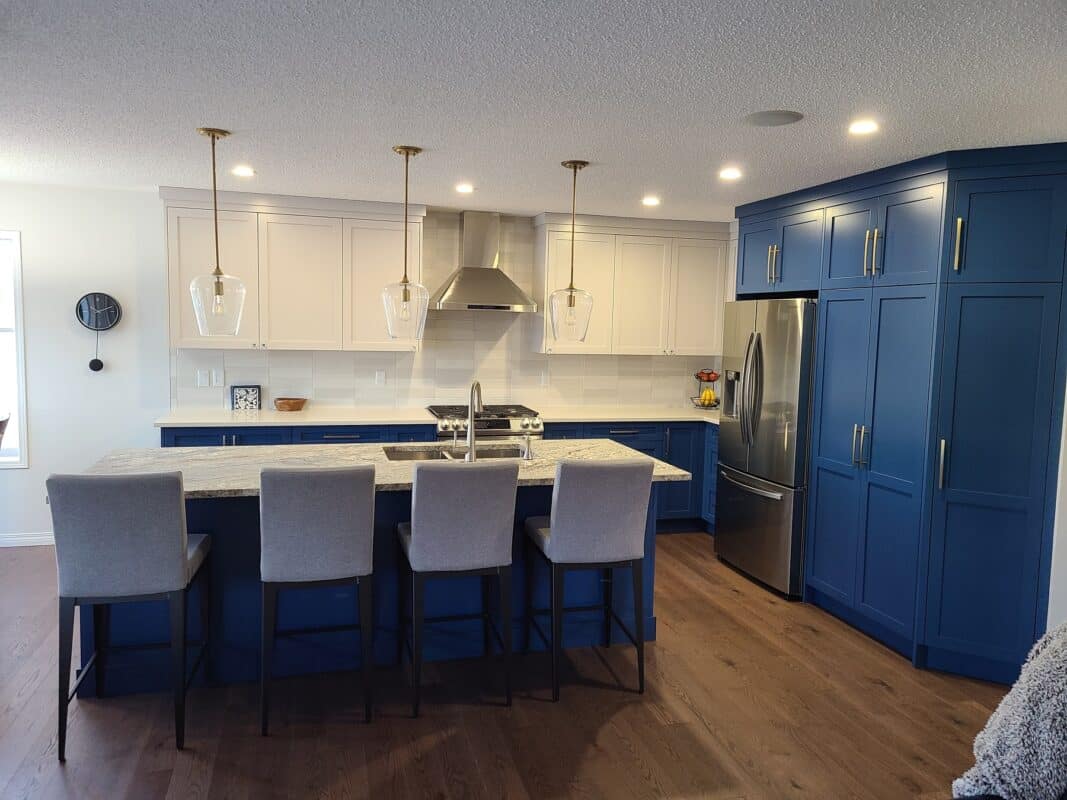Choosing the Perfect Kitchen Table

The kitchen is often referred to as the heart of the home, it is where meals are prepared, and great conversations happen. An essential component of any kitchen is the dining table, where family and friends gather to share food and stories. Choosing the right kitchen table is an important decision that can impact the functionality and aesthetics of your kitchen. In this article, we will look at various styles, shapes, and sizes of kitchen tables, along with their benefits.
Styles of Kitchen Tables
When it comes to kitchen table styles, there is a wide range of options to consider, each offering a unique blend of design and functionality.
Here are some popular styles to choose from:
Traditional
Traditional kitchen tables exude timeless elegance and often feature intricate detailing, such as turned legs and ornate carvings. They are perfect for creating a warm and inviting atmosphere, and they work well in homes with classic or vintage décor.
Characteristics:
- Ornate details: Traditional kitchen tables often feature intricate carvings, turned legs, and decorative motifs that evoke a sense of timeless elegance.
- Rich materials: They are typically crafted from high-quality hardwoods like oak, cherry, or mahogany, showcasing the natural beauty of wood.
- Formal design: Traditional tables create a refined and sophisticated ambiance, making them well-suited for more formal dining settings.
- Upholstered chairs: Accompanied by upholstered chairs or benches with intricate fabrics, adding to the overall opulence.
Benefits:
- Classic charm: Traditional tables exude a sense of nostalgia and warmth, making them a perfect fit for homes with classic or vintage decor.
- Formal occasions: They provide an excellent setting for hosting formal dinners and special occasions, adding a touch of grandeur to your gatherings.
- Timeless investment: A well-crafted traditional table can become a family heirloom, lasting for generations and never going out of style.
Modern
Modern kitchen tables are characterized by clean lines, sleek surfaces, and minimalist designs. They often use materials like glass, metal, and acrylic to create a contemporary and sophisticated look. Modern tables are an excellent choice for those who prefer a sleek and uncluttered aesthetic.
Characteristics:
- Clean lines: Modern tables are defined by sleek, straight lines and minimalistic designs that emphasize simplicity and functionality.
- Contemporary materials: They often incorporate materials like glass, metal, and acrylic, creating a visually light and open look.
- Neutral colors: Modern tables tend to feature neutral color palettes, allowing them to seamlessly blend into various interior styles.
- Geometric shapes: Rectangles, squares, and circles are common shapes, contributing to the table’s minimalist aesthetic.
Benefits:
- Streamlined aesthetics: Modern tables create an uncluttered and airy atmosphere, making them an excellent choice for those who prefer a clean and contemporary design.
- Space optimization: Their minimalistic nature helps save space and maintain a sense of openness, which is especially beneficial for smaller kitchens.
- Easy maintenance: Modern materials are often easy to clean and maintain, ensuring that your table remains looking sleek and fresh.
Rustic
Rustic kitchen tables celebrate the beauty of natural materials like wood and often have a distressed or weathered finish. These tables evoke a cozy and charming ambiance, making them ideal for farmhouse or cottage-style kitchens.
Characteristics:
- Natural textures: Rustic tables showcase the beauty of natural materials, often featuring distressed wood, knots, and uneven surfaces.
- Earthy tones: They typically come in warm and earthy colors that evoke a sense of coziness and comfort.
- Handcrafted details: Rustic tables may have hand-carved elements or artisanal craftsmanship, adding a touch of uniqueness.
- Farmhouse-inspired: They evoke a sense of rustic charm and are reminiscent of farmhouse or cottage-style kitchens.
Benefits:
- Cozy ambiance: Rustic tables create a welcoming and casual atmosphere, making them ideal for relaxed family meals and gatherings.
- Versatility: Their rustic charm allows them to fit into a range of interior styles, from traditional to eclectic and beyond.
- Durability: The use of solid wood and distressed finishes often makes rustic tables highly durable and resistant to wear and tear.
Industrial
Industrial-style kitchen tables feature a mix of raw materials like metal and wood, often with exposed hardware. They offer a rugged and urban vibe, making them a great fit for loft apartments or industrial-inspired interiors.
Characteristics:
- Raw materials: Industrial-style tables incorporate elements like metal frames, exposed hardware, and reclaimed wood to create an urban and utilitarian look.
- Edgy aesthetics: They often have an unfinished or weathered appearance, adding to their industrial appeal.
- Minimalist designs: Industrial tables embrace simplicity and functionality, focusing on clean lines and practicality.
- Contrasting textures: The combination of metal and wood creates an intriguing contrast that defines the industrial style.
Benefits:
- Urban flair: Industrial tables infuse your kitchen with a distinctive urban vibe, perfect for those who appreciate edgy and unconventional designs.
- Sturdiness: The use of robust materials ensures that industrial tables are sturdy and built to withstand heavy use, making them suitable for busy kitchens.
- Creative expression: Industrial tables offer a canvas for incorporating unique and eclectic decor elements, allowing you to showcase your personal style.
Mid-Century Modern
This style harks back to the design trends of the mid-20th century. Mid-century modern kitchen tables typically have clean lines, tapered legs, and organic shapes. They add a touch of nostalgia and sophistication to your kitchen.
Characteristics:
- Retro aesthetics: Mid-century modern tables are inspired by the design trends of the mid-20th century, featuring iconic shapes, tapered legs, and minimalist details.
- Organic forms: These tables often incorporate gentle curves and organic shapes, contributing to their timeless and elegant appeal.
- Playful colors: Mid-century modern tables may come in bold colors or combinations, adding a vibrant and playful touch to your kitchen.
- Functional design: These tables emphasize functionality and comfort, making them both stylish and practical.
Benefits:
- Nostalgic charm: Mid-century modern tables evoke a sense of nostalgia, allowing you to bring a piece of design history into your kitchen.
- Versatile fit: Their timeless and adaptable design makes them suitable for various interior styles, whether you lean toward vintage or contemporary aesthetics.
- Thoughtful craftsmanship: Mid-century modern tables often prioritize ergonomic design and comfort, ensuring a pleasant dining experience for you and your guests.
In the end, choosing the perfect kitchen table style involves aligning your preferences, lifestyle, and the overall design of your kitchen space.
Each style brings its own unique character, enabling you to create a dining area that perfectly reflects your personality and meets your functional needs.
Shapes of Kitchen Tables
The shape of your kitchen table plays a significant role in determining the overall flow and functionality of the space. Different shapes offer distinct advantages, so let’s delve into the options:
- Rectangular: Rectangular kitchen tables are the most common choice, offering ample seating and a versatile layout. They fit well in larger kitchens and dining areas, accommodating both casual meals and formal gatherings.
- Round: Round kitchen tables promote intimate conversations and a sense of togetherness. They work wonders in smaller kitchens, as they eliminate sharp corners and allow for easy circulation.
- Square: Square kitchen tables strike a balance between the efficiency of a round table and the familiarity of a rectangular one. They work well in compact spaces and can be placed against walls or in corners.
- Oval: Oval kitchen tables blend the advantages of both rectangular and round shapes. They provide more seating than a round table and maintain a sense of intimacy, making them suitable for various kitchen sizes.
Sizes of Kitchen Tables
Selecting the right size for your kitchen table is crucial to ensure comfort and functionality. Consider the following factors when determining the appropriate size:
- Available Space: Measure your kitchen or dining area to determine the maximum dimensions your table can occupy without overcrowding the space.
- Seating Capacity: Consider how many people you want to accommodate regularly. A general guideline is to allow 24 inches of table width per person, but this can vary based on personal preference and table shape.
- Table Height: Standard table heights are around 30 inches, but counter-height tables (around 36 inches) and bar-height tables (around 42 inches) are also popular options, especially for informal dining or kitchen islands.
Benefits of Different Styles, Shapes, and Sizes
There are many benefits associated with the style of kitchen table for your home:
- Traditional: Offers a timeless and classic look that can complement various interior styles.
- Modern: Creates a sleek and contemporary atmosphere, perfect for urban and minimalist spaces.
- Rustic: Adds a cozy and inviting feel, reminiscent of a countryside retreat.
- Industrial: Brings an edgy and unique character to your kitchen, ideal for those seeking an urban loft vibe.
- Mid-Century Modern: Infuses a sense of nostalgia and elegance, making a statement in any kitchen.
When it comes to shapes and sizes:
- Rectangular: Provides ample seating and works well for both casual and formal dining.
- Round: Fosters intimate conversations and is space-efficient, suitable for smaller kitchens.
- Square: Offers a balanced layout and fits snugly into corners or against walls.
- Oval: Combines the best of rectangular and round tables, accommodating more people while maintaining a sense of connection.
In conclusion, choosing the right kitchen table involves a thoughtful consideration of style, shape, and size. Each option comes with its own set of benefits, catering to different tastes and needs. You must keep in mind your available space, and seating requirements. Select a kitchen table that not only enhances your dining experience but also becomes a centerpiece of your home’s design.









One thought on “Choosing the Perfect Kitchen Table”
Comments are closed.